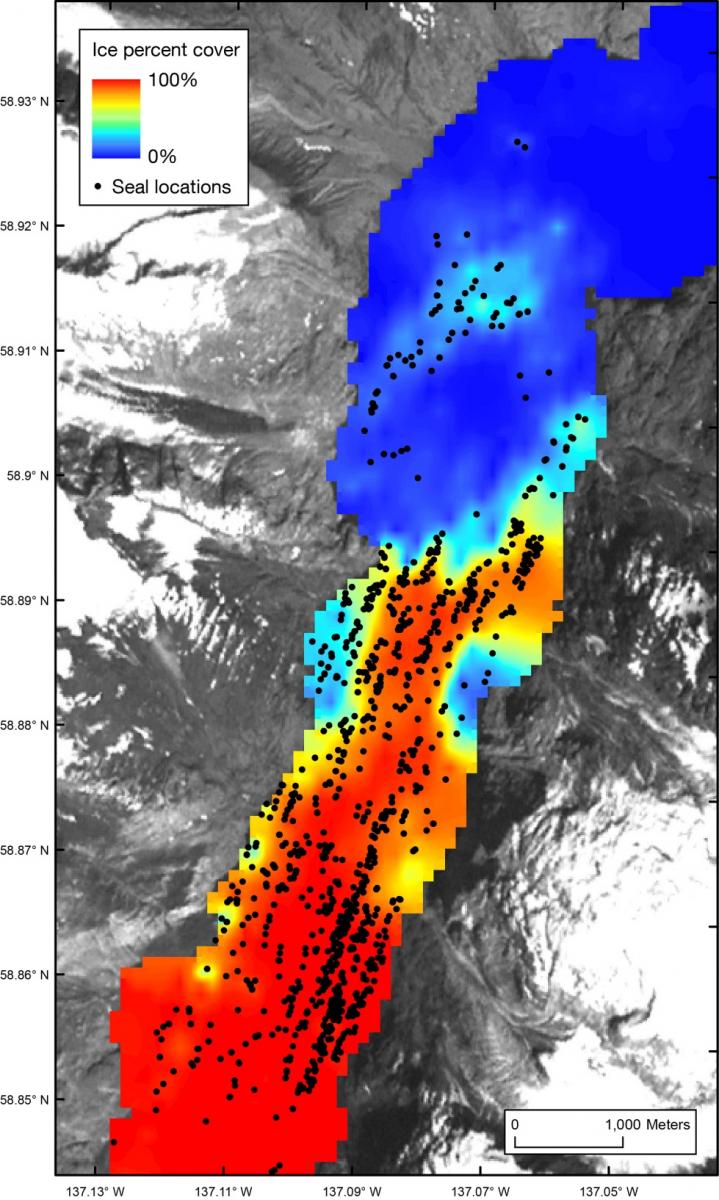Tidewater glaciers are a prominent feature along the southeastern and south-central coasts of Alaska and play an important role in landscape and ecosystem processes. Many tidewater glaciers calve large icebergs into the marine environment; the icebergs then provide important resting and pupping areas for harbor seals, a species of conservation concern in Alaska. Glacier Bay National Park historically supported one of the largest aggregations of harbor seals in Alaska, but the population has declined by up to 75% since 1992. Glacier Bay National Park, in collaboration with the University of Alaska Fairbanks Geophysical Institute and the National Marine Mammal Laboratory, is using GPS, Geographic Information System (GIS), and remote sensing technologies to monitor trends in the abundance of harbor seals in Glacier Bay and to assess the relationship between the availability of glacial ice and harbor seal spatial distribution. Aerial digital imagery of the primary glacial ice site at Johns Hopkins Inlet provides a permanent record of seal distribution and captures important information regarding ice conditions and characteristics in Glacier Bay (see figure showing harbor seal distribution). Object-Based Image Analysis workflows are being developed to map and quantify glacial ice properties that serve as inputs into statistical models that link seal locations to ice distribution and characteristics. Understanding relationships between glacial ice availability and harbor seal distribution and abundance will provide novel perspectives on the spatial and temporal variation of harbor seals in tidewater glacial fjords in Alaska.
 Harbor seal distribution determined from aerial imagery in relation to percent ice cover in Johns Hopkins Inlet in Glacier Bay National Park, Alaska (June 2011).
Harbor seal distribution determined from aerial imagery in relation to percent ice cover in Johns Hopkins Inlet in Glacier Bay National Park, Alaska (June 2011).

